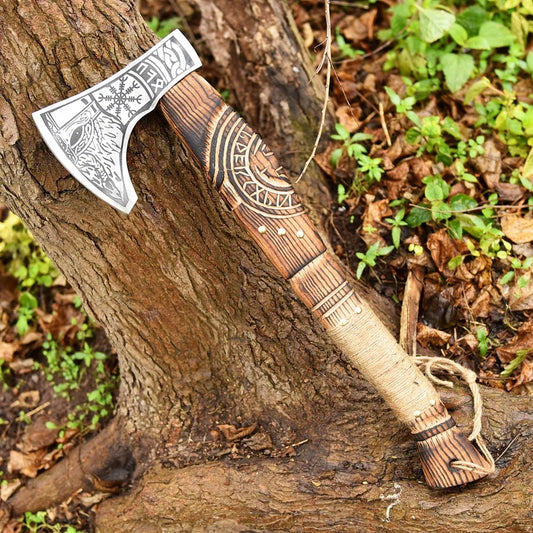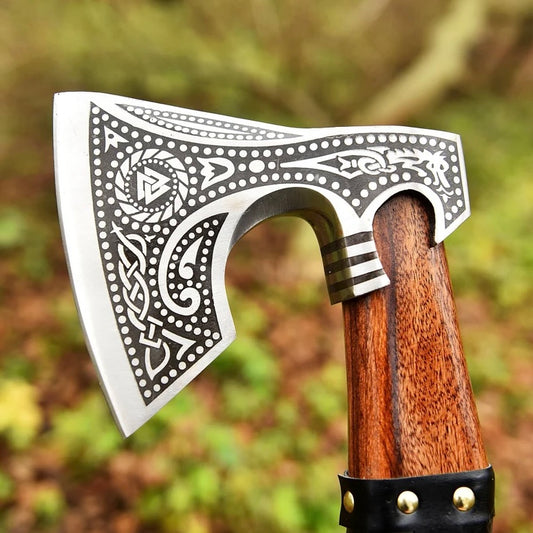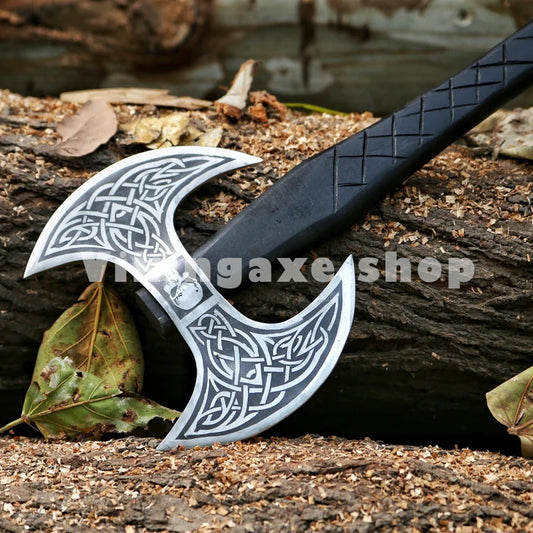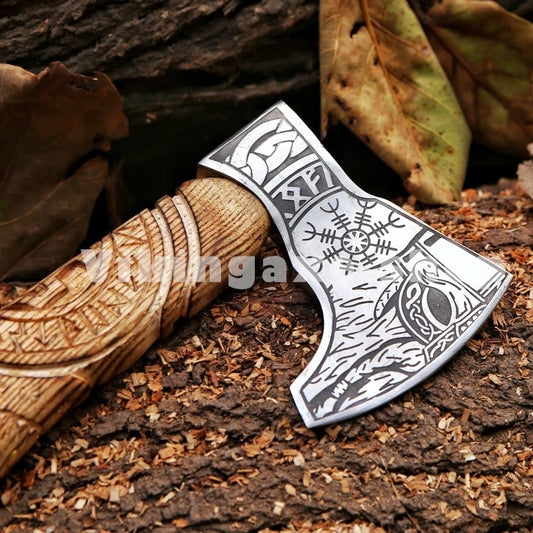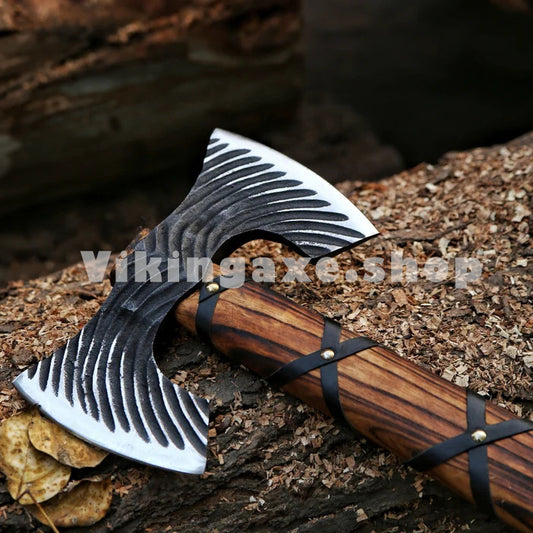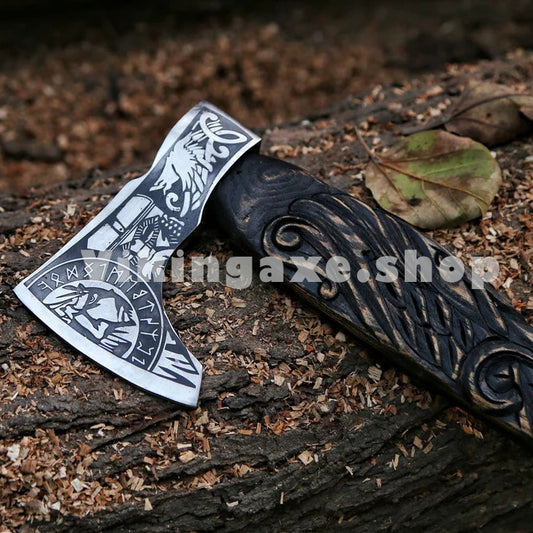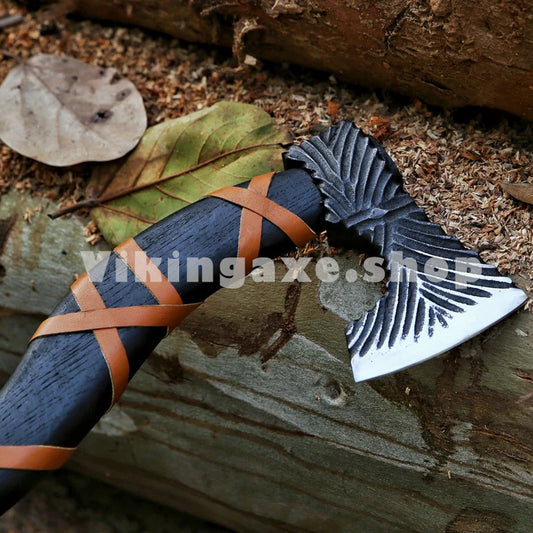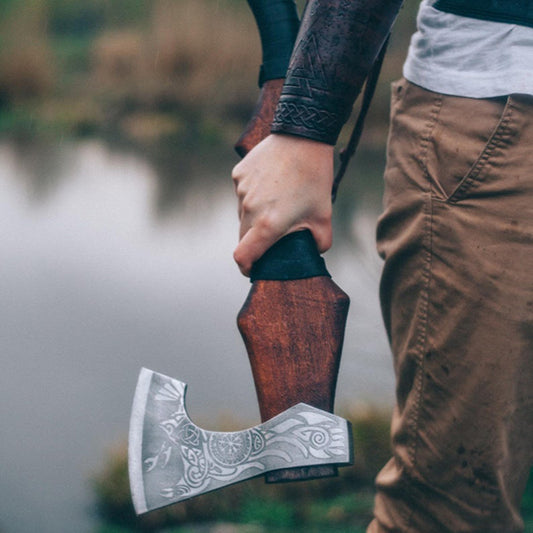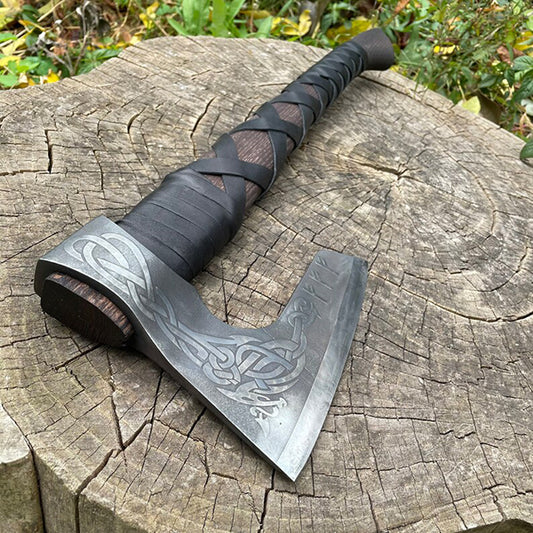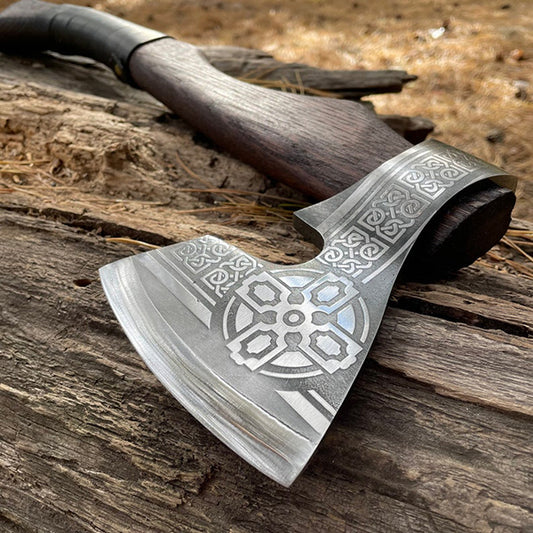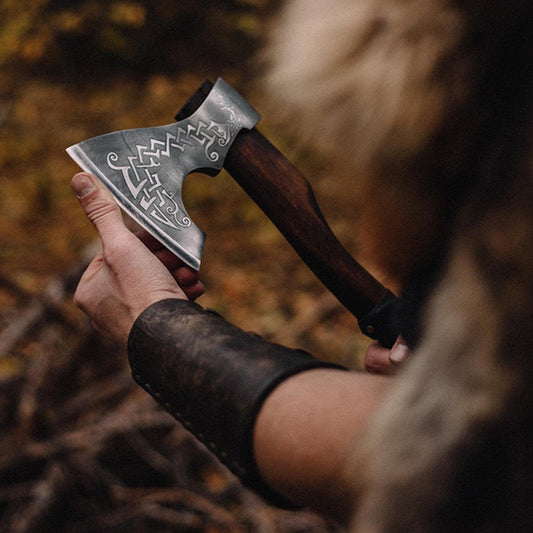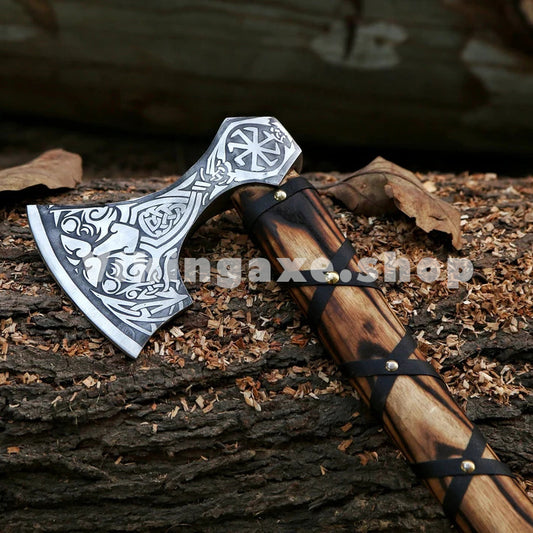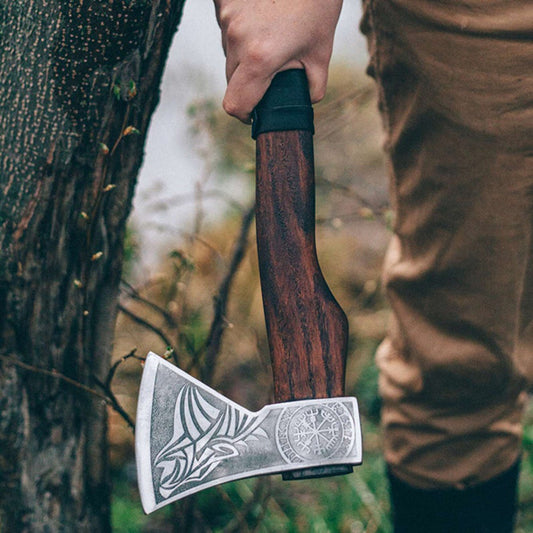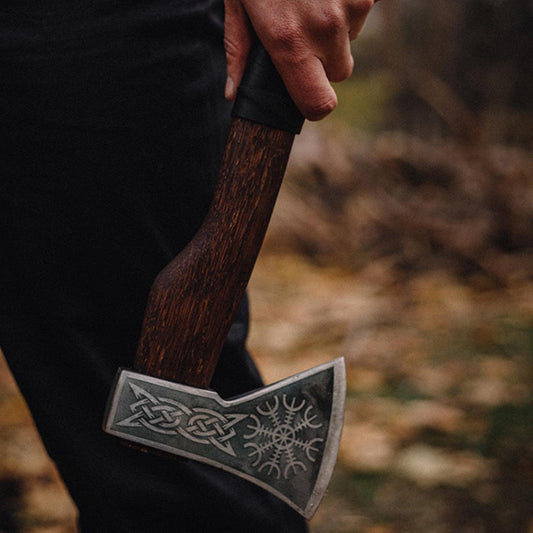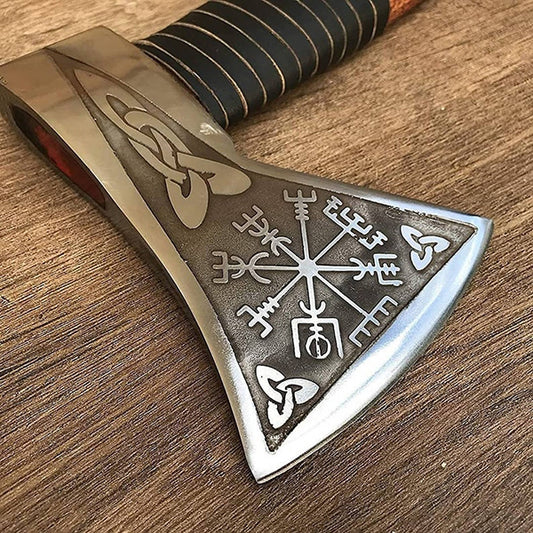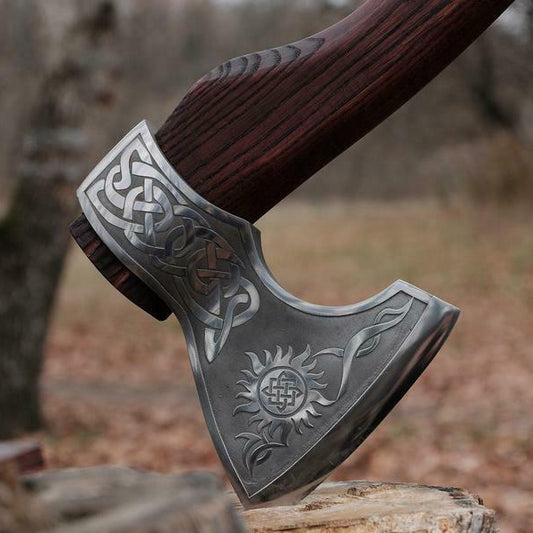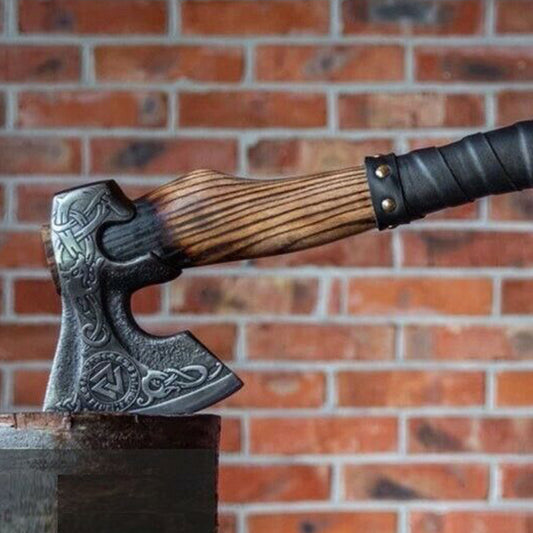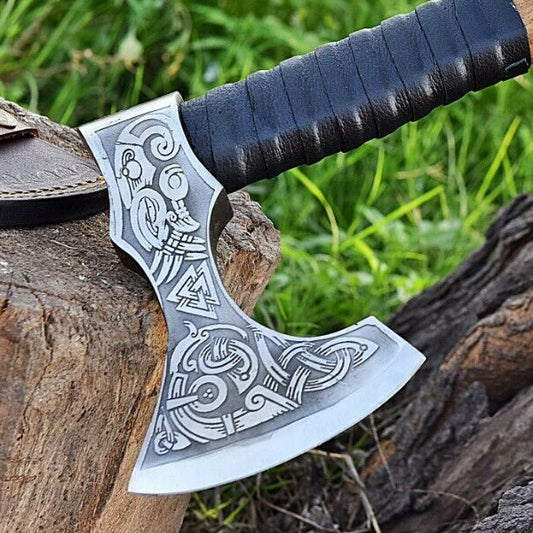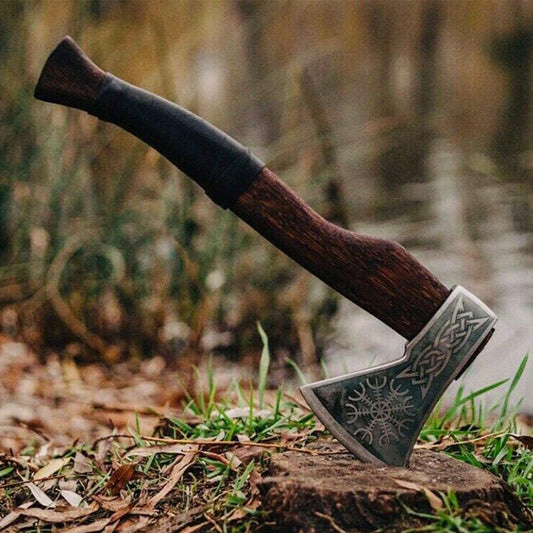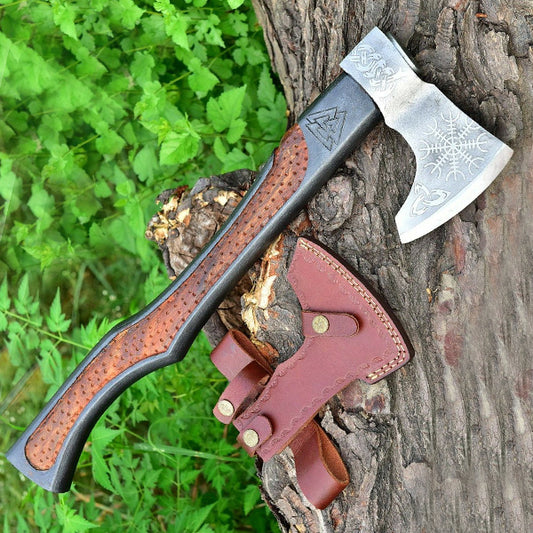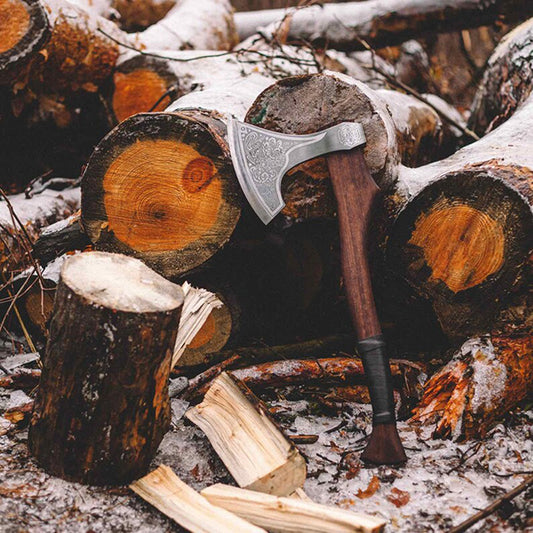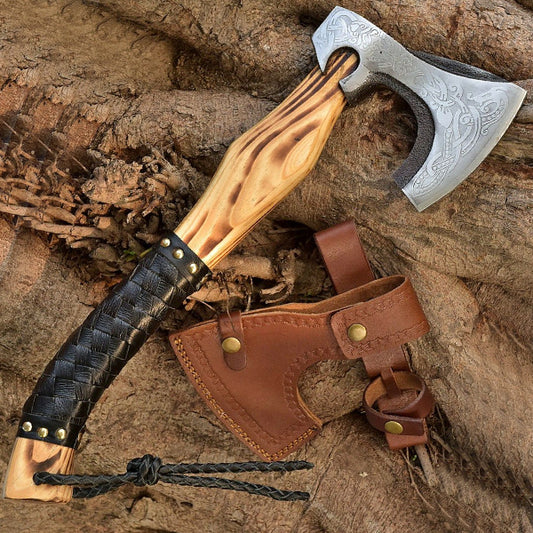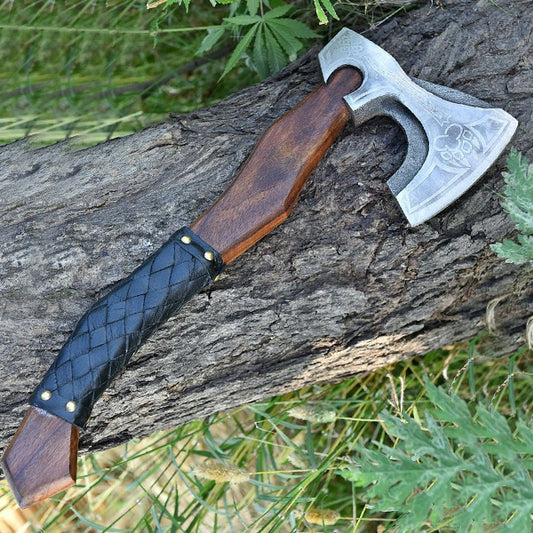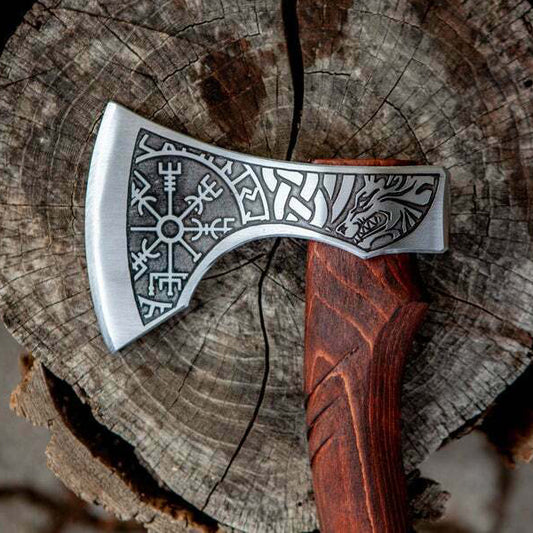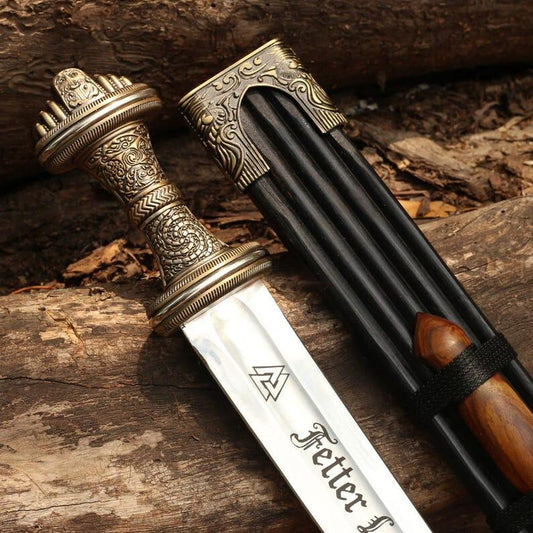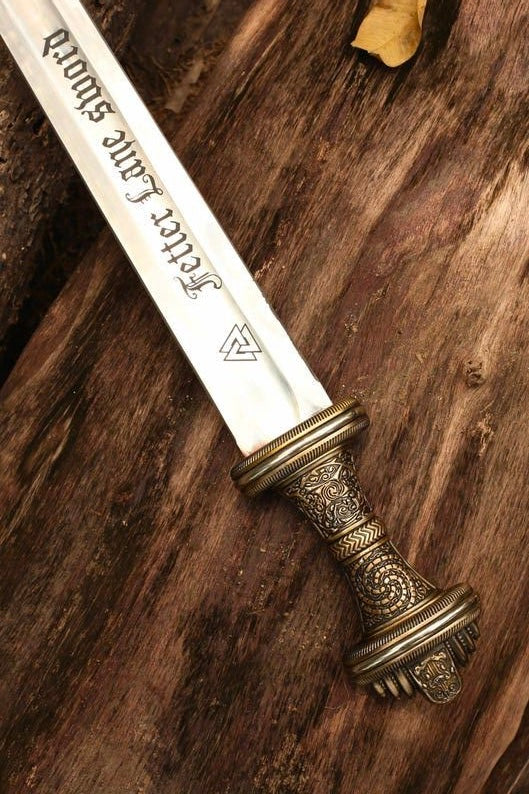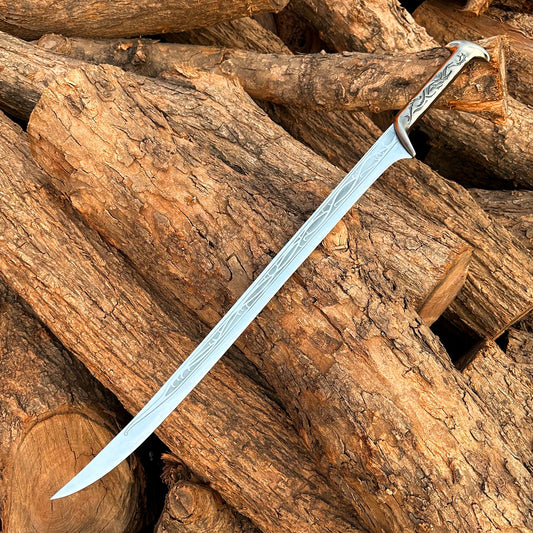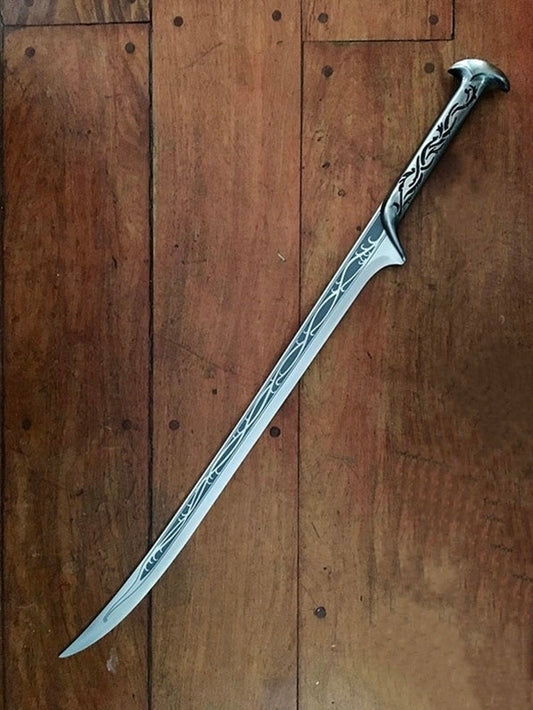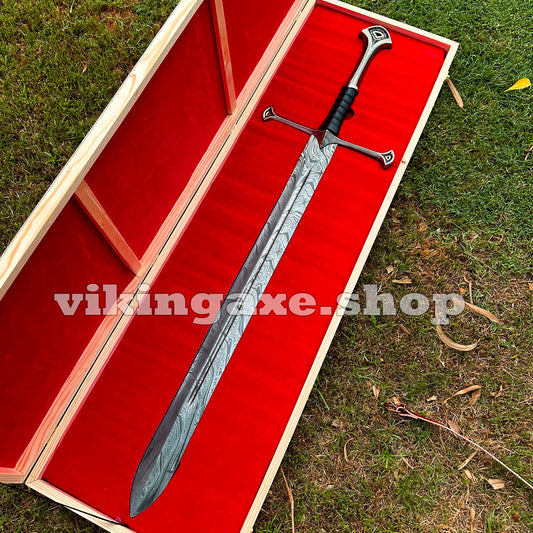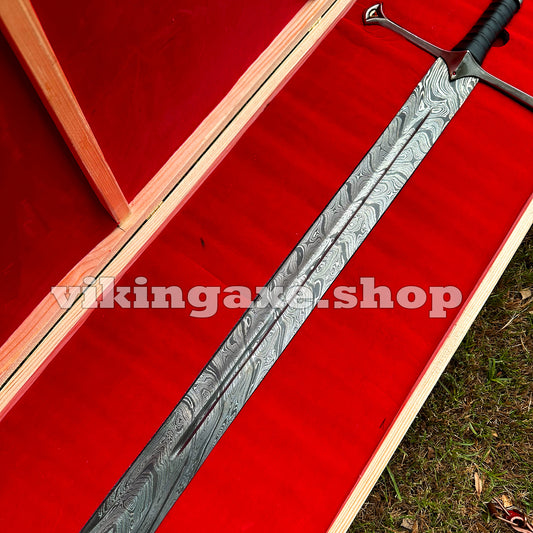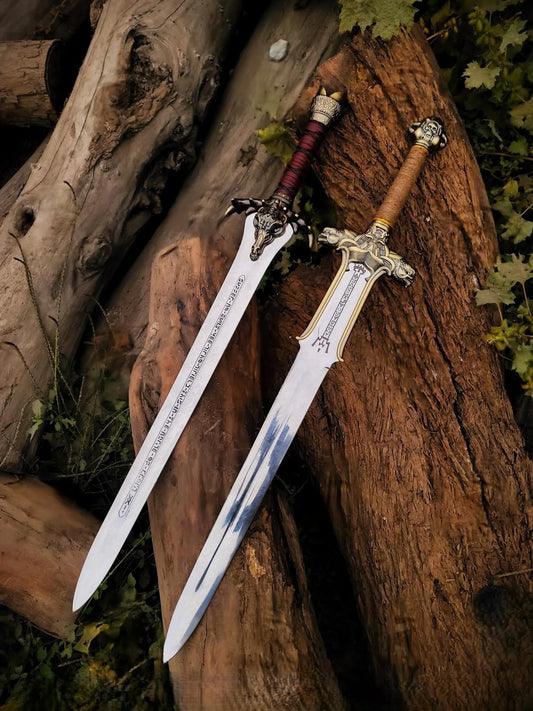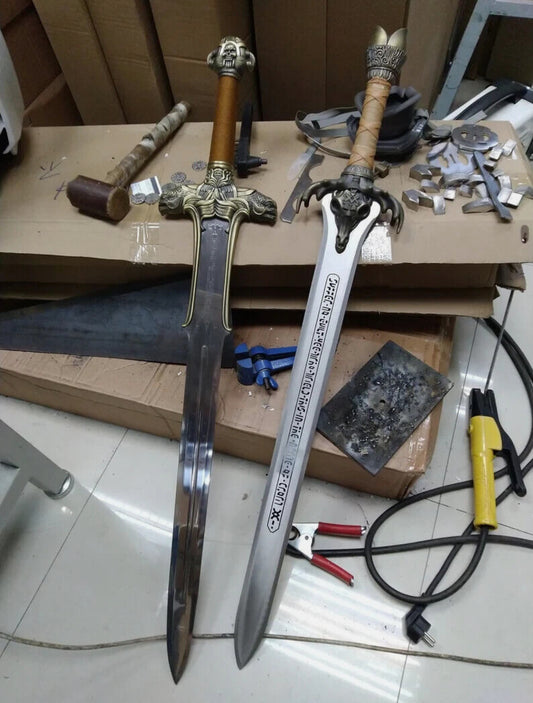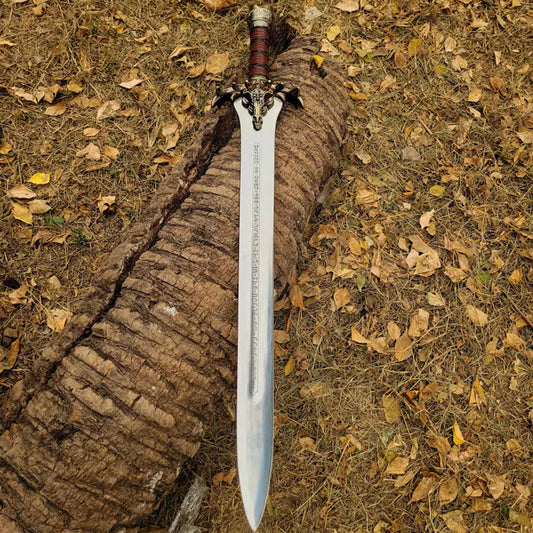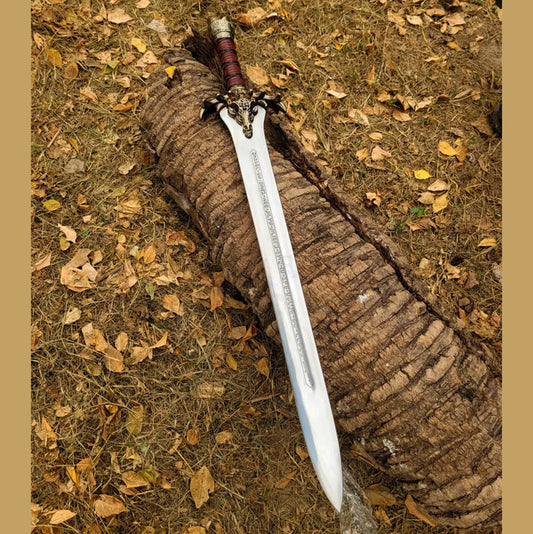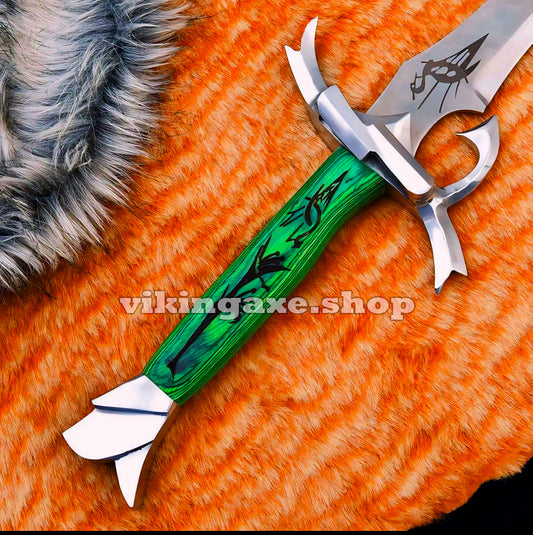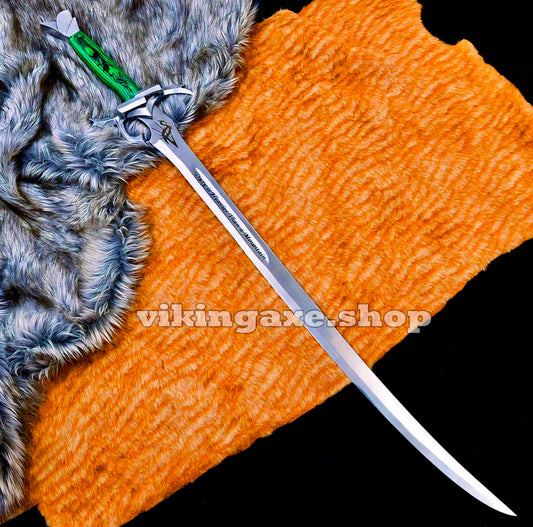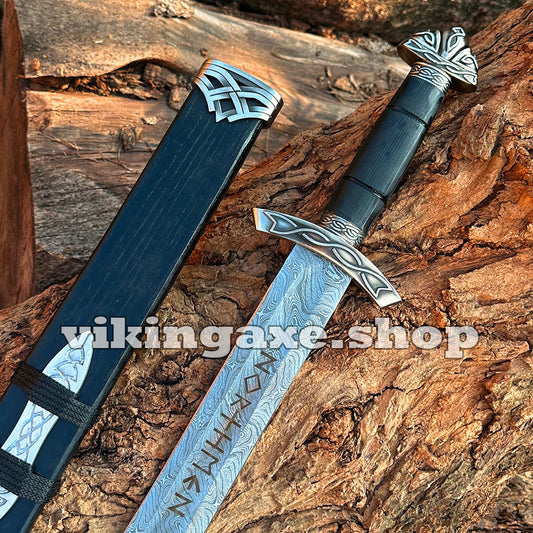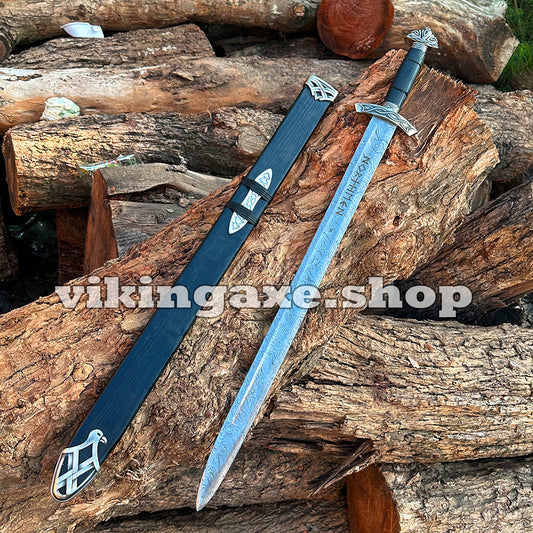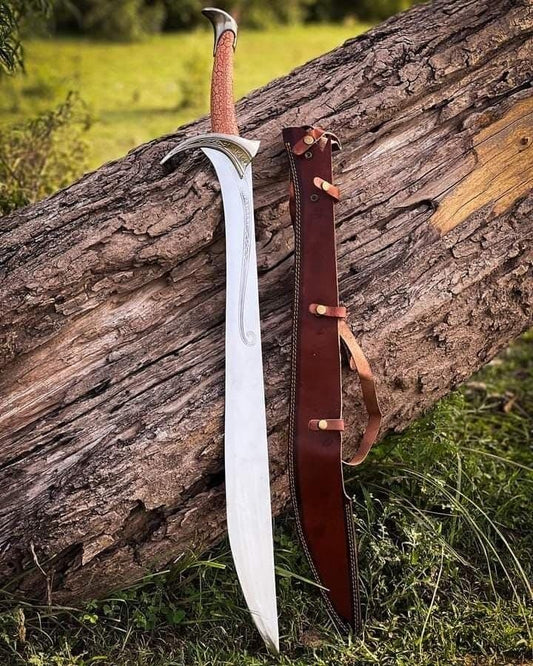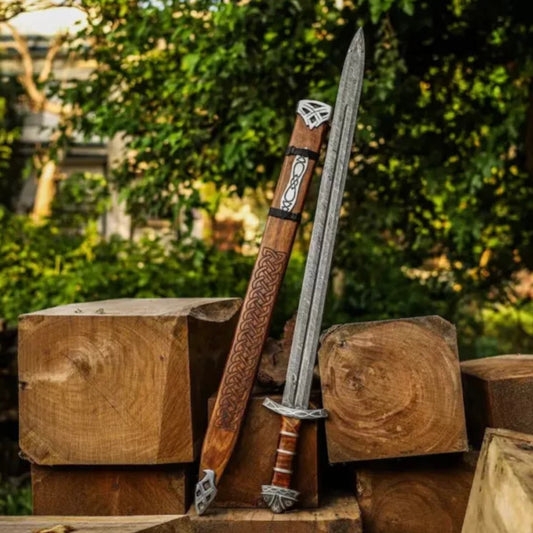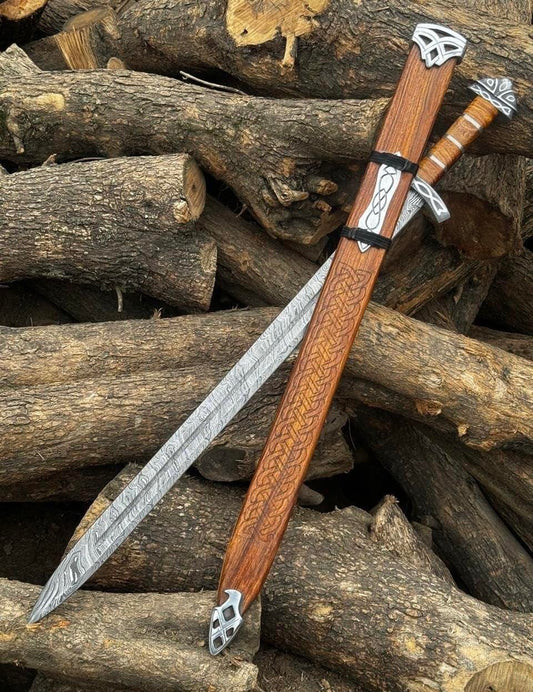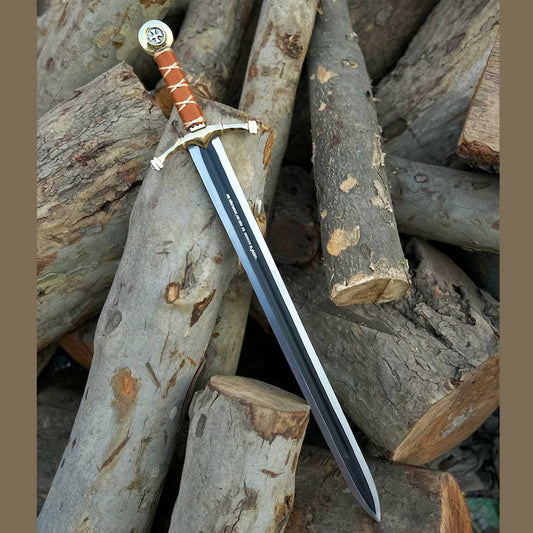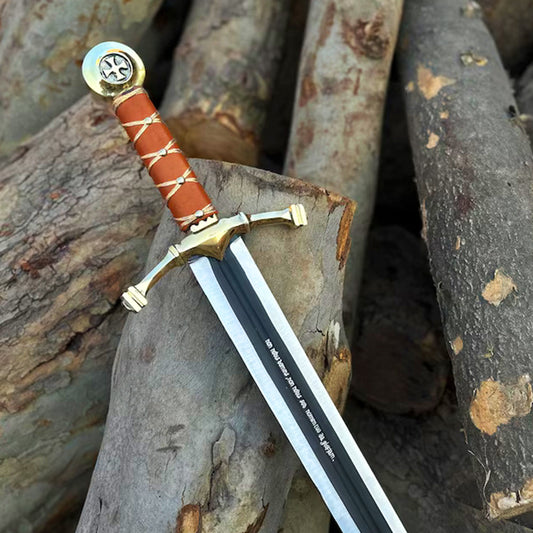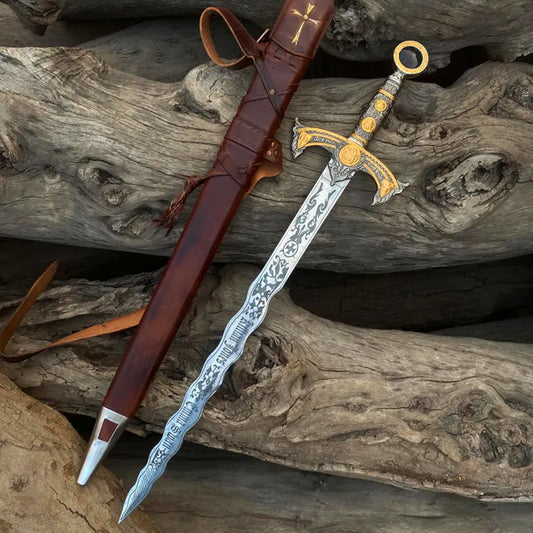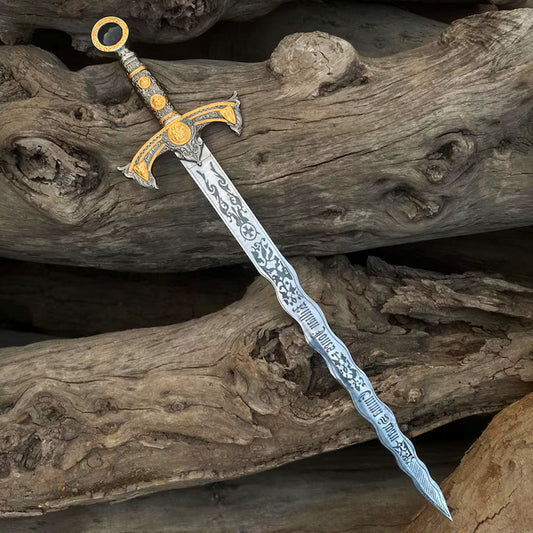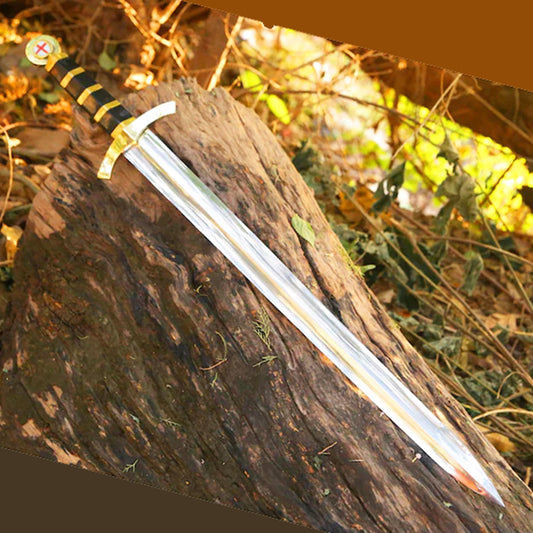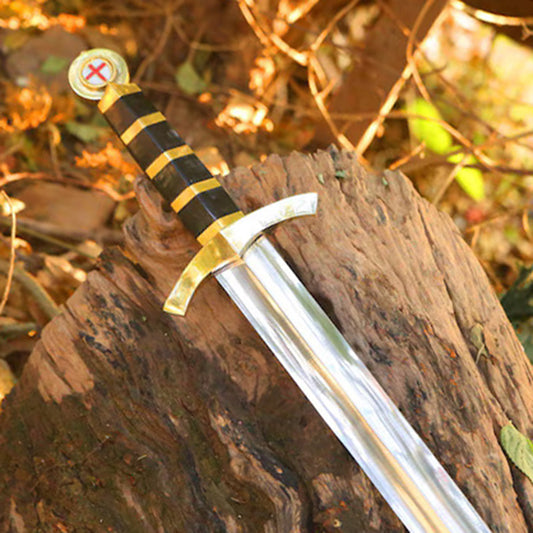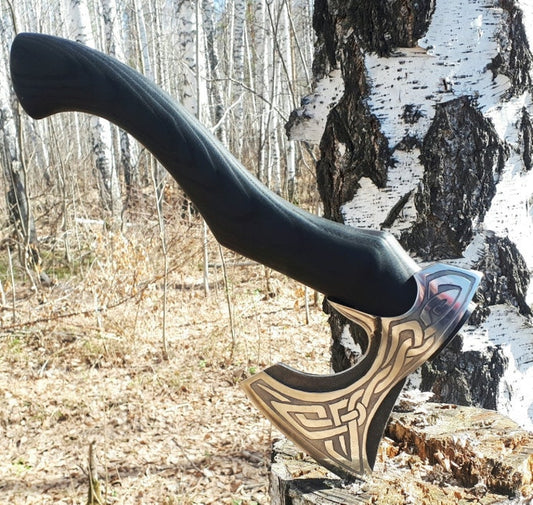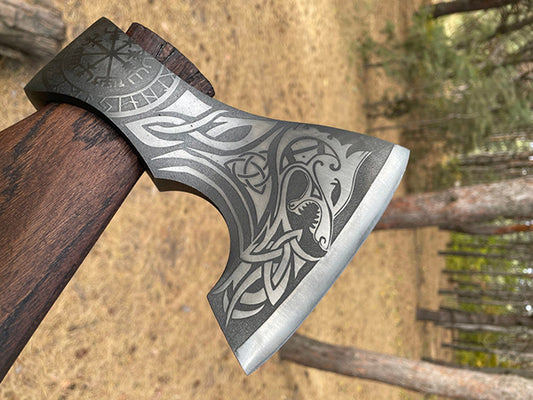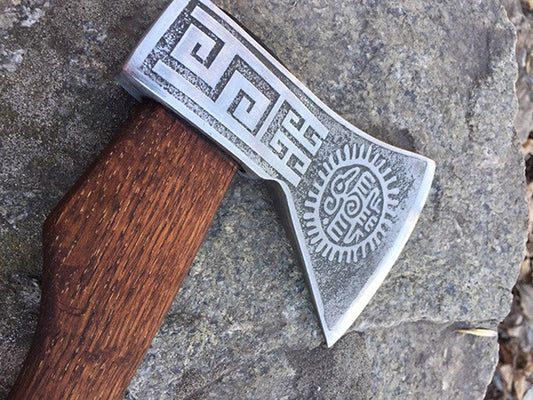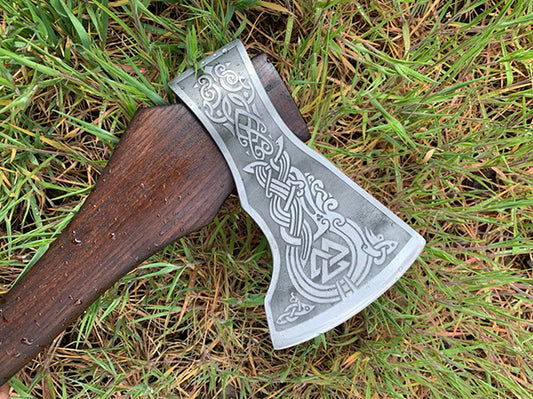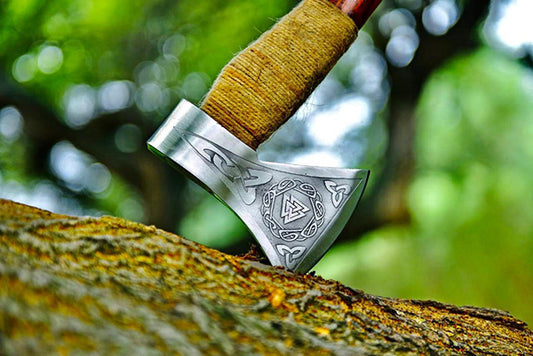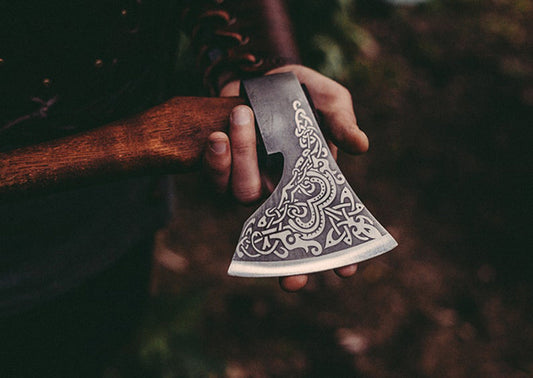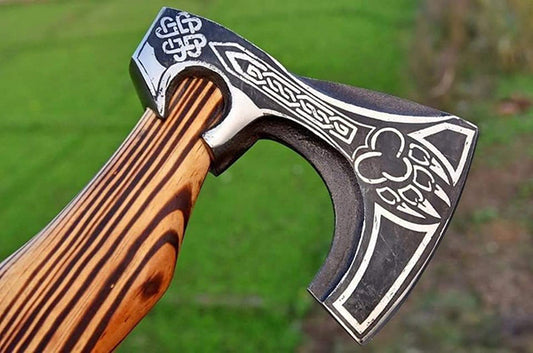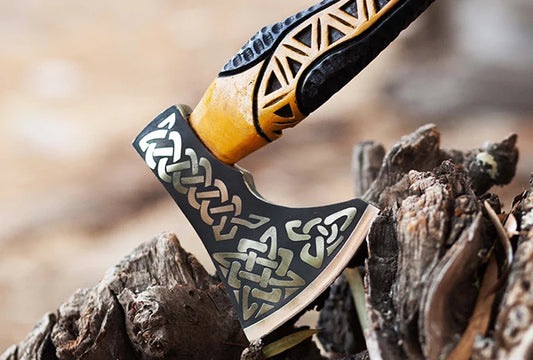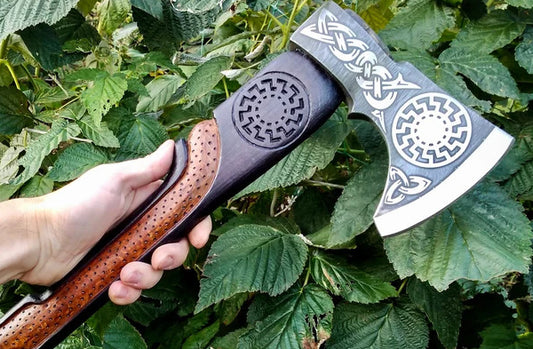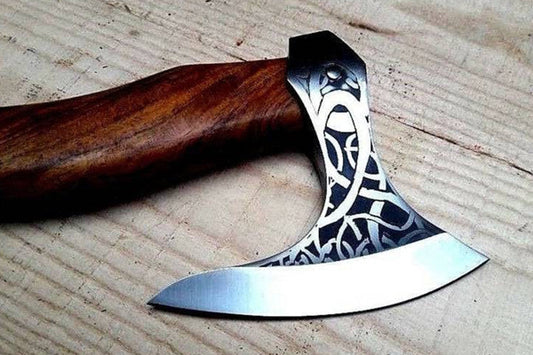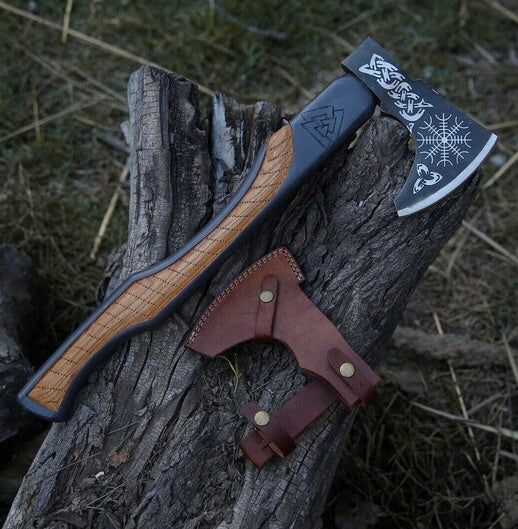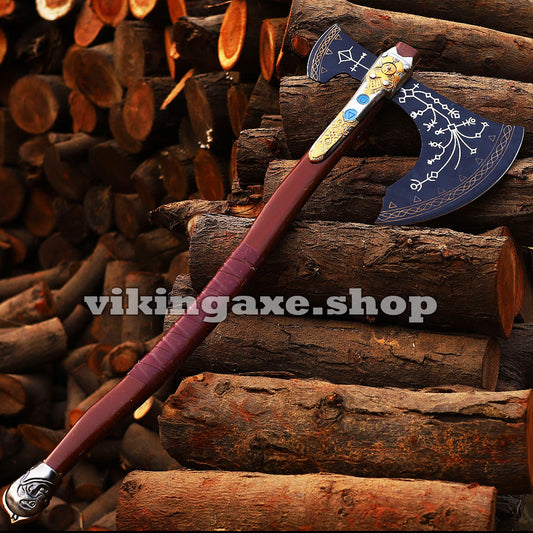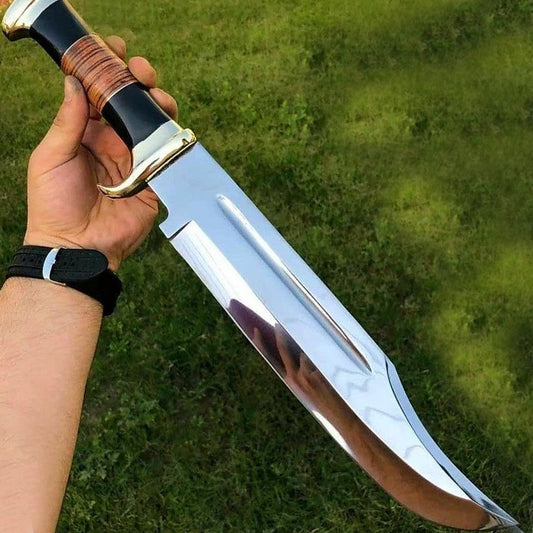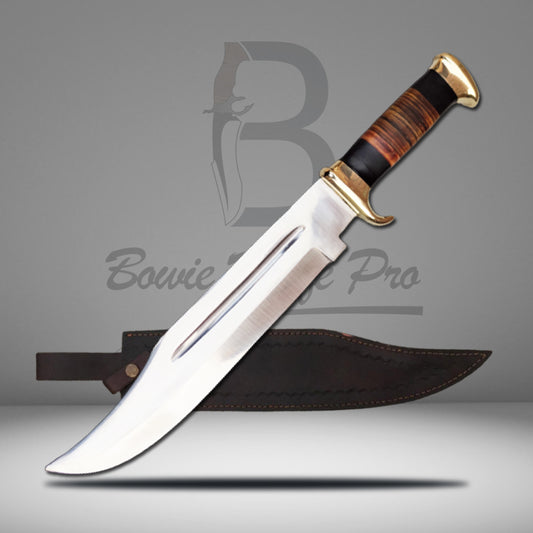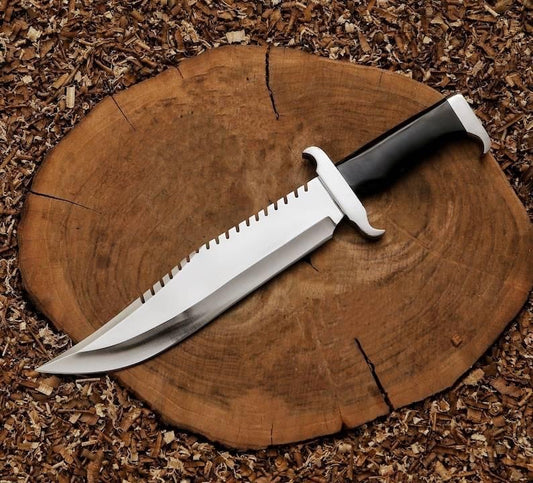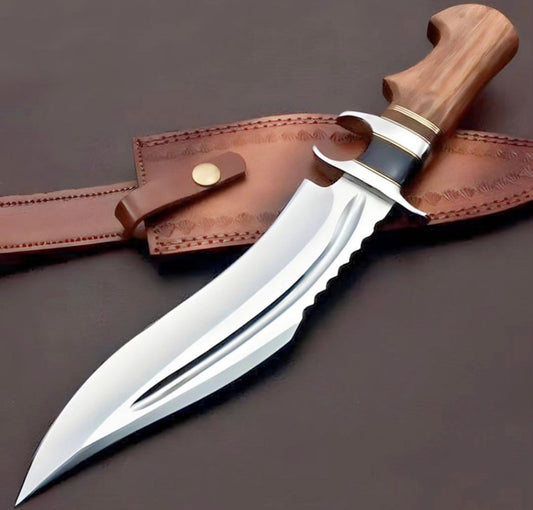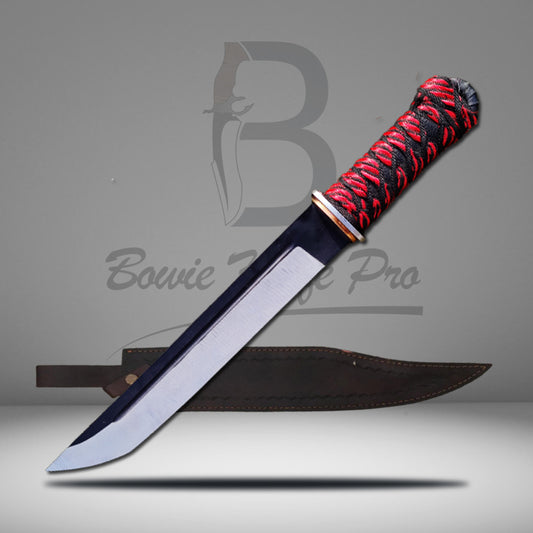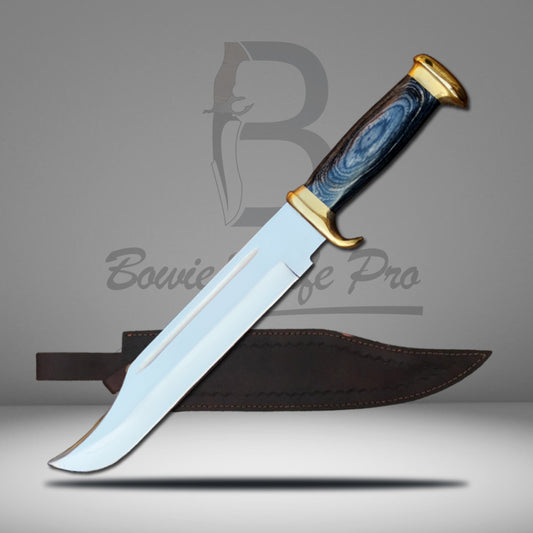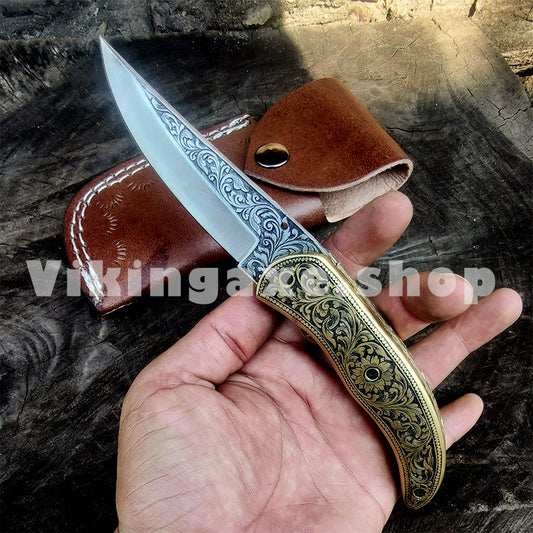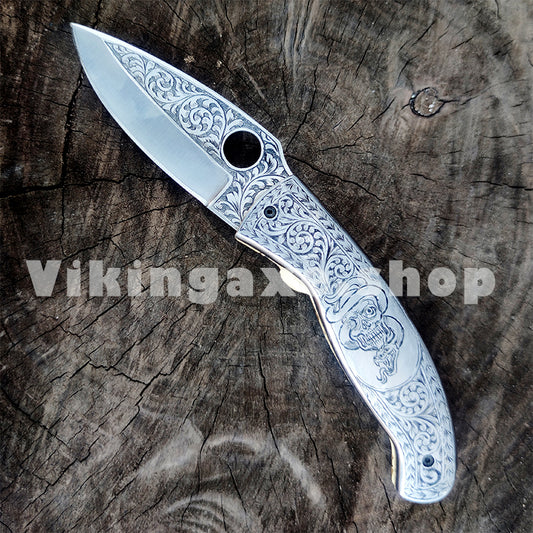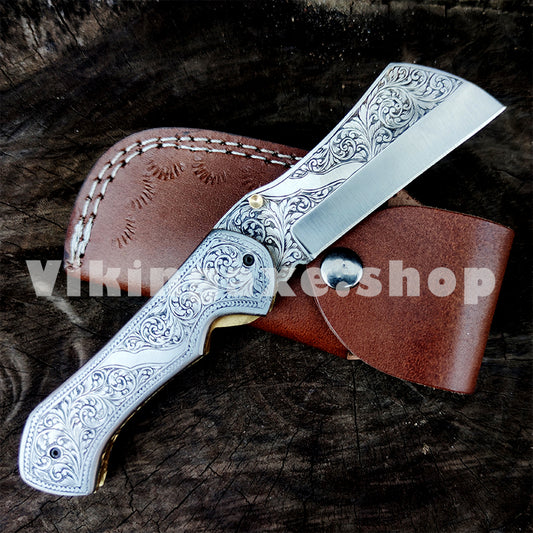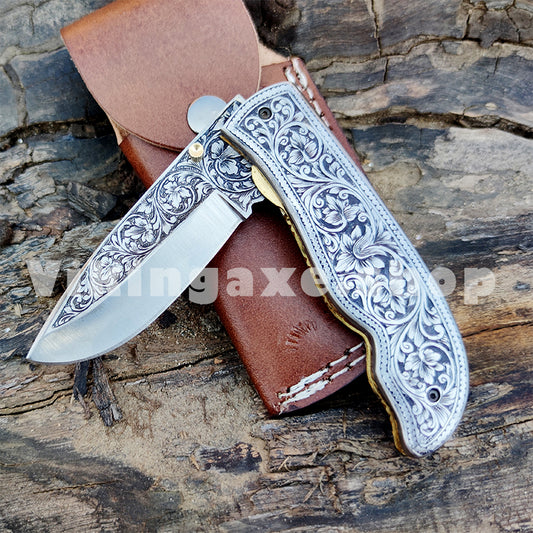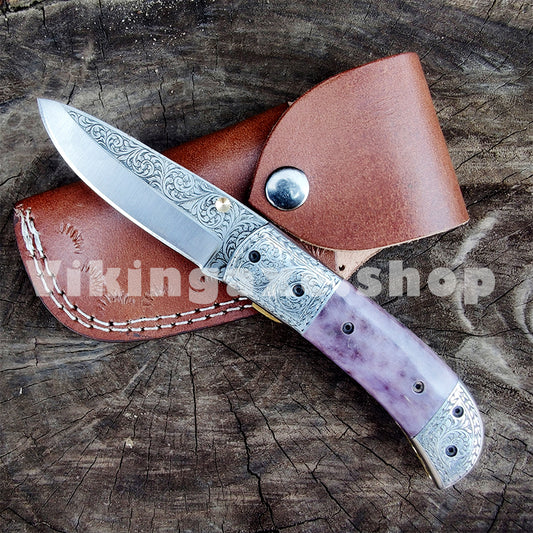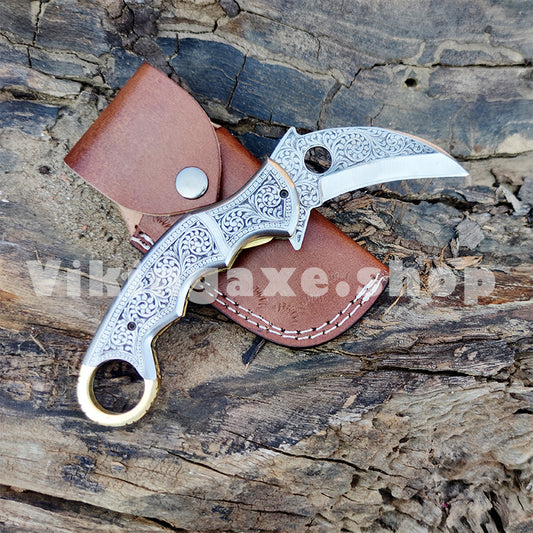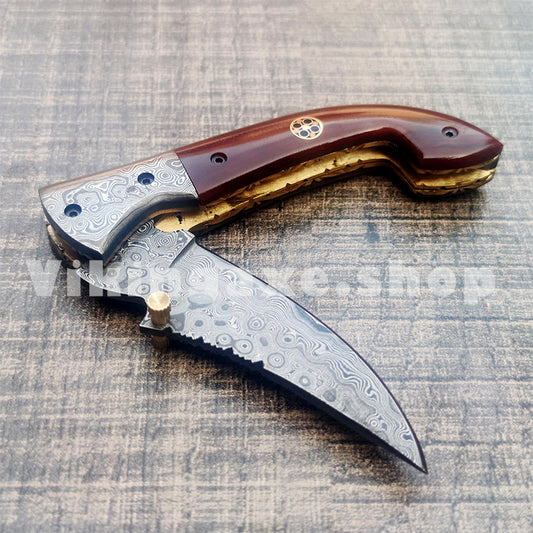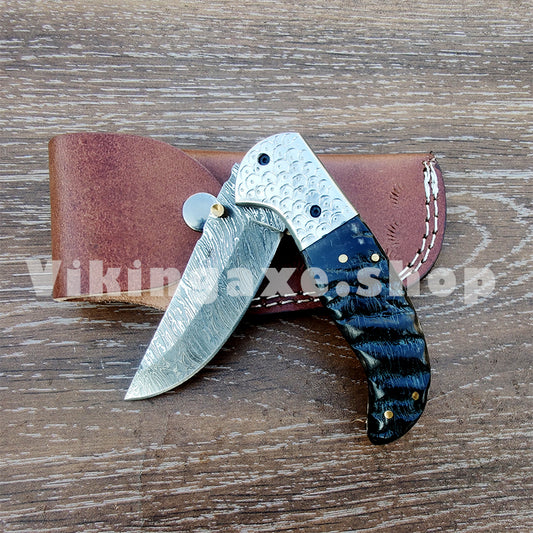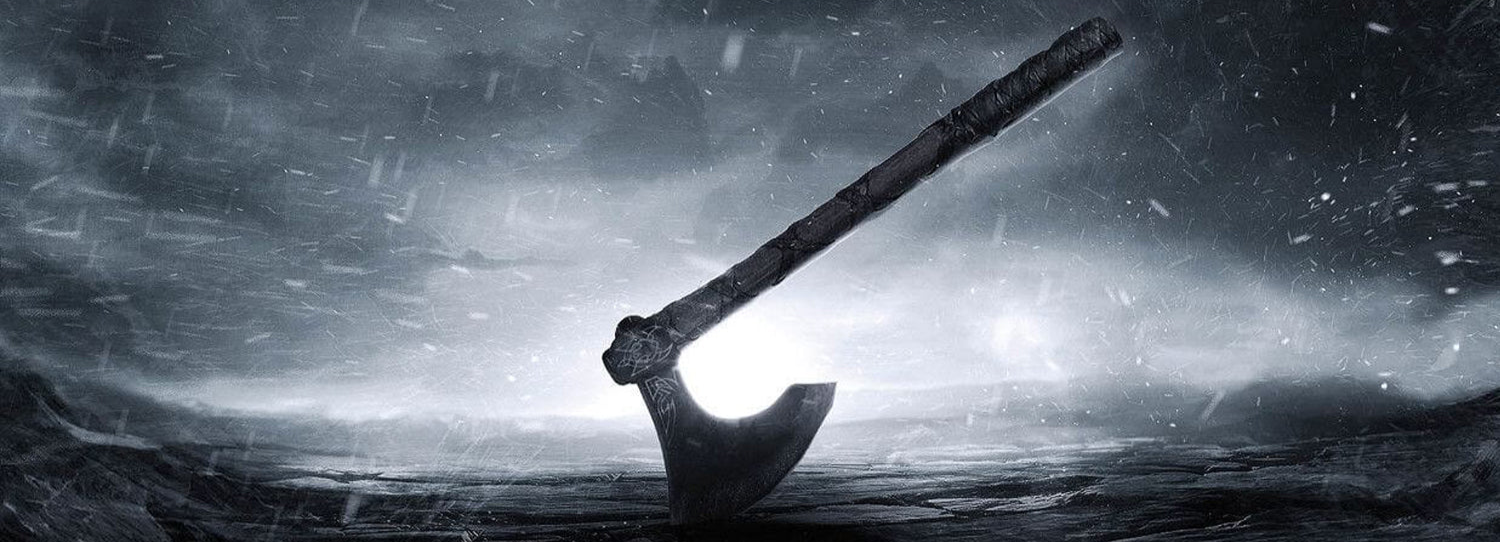
#1 VIKING AXE SHOP
THE TRADITIONALLY CRAFTED VIKING AXE WITH MODERN TECHNIQUES, STRONG AND DURABLE MATERIAL
THE VIKING AXES USED FOR SPLITTING WOODS OR SKULLS ACCORDING TO THEIR UNIQUE AND TRENDY DESIGN, A HUGE COLLECTION AXE OF TRADITIONAL AND CONTEMPORARY STYLED VIKING AXES IS AVAILABLE OR SKULLS ACCORDING TO THEIR UNIQUE AND TRENDY DESIGN, A HUGE COLLECTION AXE OF TRADITIONAL AND CONTEMPORARY STYLED VIKING AXES IS AVAILABLE
You can choose the shape and size of the Viking Axes according to your needs whether you want to use them to fight enemies or cut, cut wood. The excellent quality of the metal makes it strong and sharp, the production process of attaching the Axe to the wooden frame is done in a skillful and cunning way, they will never be separated from each other.The Viking axe, forged with ancient craftsmanship and a fierce double-edged blade, embodies the spirit of the Norse warriors, ready to cleave through any obstacle that stands in their way.
Viking Axe Collection
-
Custom Nordic Viking Axe Hand Crafted Axe Ash Wood Handle
Regular price $220.00 USDRegular priceUnit price / per$420.00 USDSale price $220.00 USDSale -
Custom Norse Viking Axe Hand Crafted Nordic Axe With Sheath
Regular price $190.00 USDRegular priceUnit price / per$290.00 USDSale price $190.00 USDSale -
Viking Axe Double Head | Medieval Warrior Axe VK-061
Regular price $320.00 USDRegular priceUnit price / per$420.00 USDSale price $320.00 USDSale -
Personalized Viking Axe | Handmade Axe VK-062
Regular price $220.00 USDRegular priceUnit price / per$420.00 USDSale price $220.00 USDSale -
Viking Axe Double Head | Handmade Axe VK-063
Regular price $220.00 USDRegular priceUnit price / per$450.00 USDSale price $220.00 USDSale -
Handmade Viking Axe | Engraved Handle VK-065
Regular price $380.00 USDRegular priceUnit price / per$580.00 USDSale price $380.00 USDSale -
Handmade Viking Axe | High Carbon Steel Axe VK-066
Regular price $200.00 USDRegular priceUnit price / per$480.00 USDSale price $200.00 USDSale -
Throwing Axes VK-054 | Viking Axe | Camping Axe
Regular price $170.00 USDRegular priceUnit price / per$230.00 USDSale price $170.00 USDSale -
Hand Forged Viking Axe VK-053 | Custom Throwing Axe
Regular price $220.00 USDRegular priceUnit price / per$320.00 USDSale price $220.00 USDSale -
Throwing Axe VK-042 | Camping Hatchet With Etching
Regular price $220.00 USDRegular priceUnit price / per$320.00 USDSale price $220.00 USDSale -
Custom Viking Axe With Etching VK-040 | Best Handmade Throwing Axes
Regular price $180.00 USDRegular priceUnit price / per$240.00 USDSale price $180.00 USDSale -
Handmade Viking Axe | Throwing Axe VK-064
Regular price $220.00 USDRegular priceUnit price / per$480.00 USDSale price $220.00 USDSale -
Carbon Steel Engraved Throwing Axes VK-039 | Viking Wolf Axe
Regular price $160.00 USDRegular priceUnit price / per$220.00 USDSale price $160.00 USDSale -
Slavic Nordic Viking Axe VK-038 | Throwing Axe With Etching
Regular price $160.00 USDRegular priceUnit price / per$220.00 USDSale price $160.00 USDSale -
Slavonic Forged Steel Viking Battle Axe VK-022 | Camping Axe
Regular price $160.00 USDRegular priceUnit price / per$220.00 USDSale price $160.00 USDSale -
Handmade Viking Bearded Axe VK-005 | Natural Wood Handle
Regular price $240.00 USDRegular priceUnit price / per$340.00 USDSale price $240.00 USDSale -
Carbon Steel Throwing Axe VK-006 | Best Selling Hatchet Axe
Regular price $160.00 USDRegular priceUnit price / per$220.00 USDSale price $160.00 USDSale -
Real Viking Style Axe VK-009 | Bearded Camping Axe
Regular price $180.00 USDRegular priceUnit price / per$230.00 USDSale price $180.00 USDSale -
Carbon Steel Throwing Axe VK-007 | Custom Viking Axe
Regular price $160.00 USDRegular priceUnit price / per$220.00 USDSale price $160.00 USDSale -
Premium Throwing Axe VK-012 | Handmade Bearded Axe
Regular price $170.00 USDRegular priceUnit price / per$230.00 USDSale price $170.00 USDSale -
Handmade Viking Axe With Etching VK-044 | Best Throwing Axe
Regular price $220.00 USDRegular priceUnit price / per$340.00 USDSale price $220.00 USDSale -
Carbon Steel Viking Battle Axe VK-011 | Authentic Throwing Axes
Regular price $160.00 USDRegular priceUnit price / per$220.00 USDSale price $160.00 USDSale -
Forged Throwing Axes VK-010 | Viking Hatchet Bearded Axe
Regular price $160.00 USDRegular priceUnit price / per$220.00 USDSale price $160.00 USDSale -
Slavonic Viking Axe VK-008 | Carbon Steel Throwing Axe
Regular price $180.00 USDRegular priceUnit price / per$280.00 USDSale price $180.00 USDSale
Graceful, Sharp, And Classy Viking Axes With All Sizes From Small To Large
Hello, Are you looking for a sharp and fashionable Viking Axe to cut wood in the forest or are you looking for a stylish skull-splitting Axe? If so, congratulations on being on the right page to turn your search into the most popular place. Well, now we are going to talk about the features, all the details of the Viking Axes, as well as the details of the different types of Viking Axes that are widely used today and in the Viking era.
The popularity of the infamous Vikings drama with the main character Ragnar Lothbrok - and his war Axe - has aroused interest in Viking Axes for many people. The Viking Axe is a great gift for you, a friend, or a loved one who is an Axe or a fan of Viking history.
Viking Axe is a handy tool with a variety of uses both on the battlefield and at home. At that time, swords were a luxury and only rich men could afford them. The Axe, on the other hand, was virtually universal.
Viking Sword Collection
-
Custom Handmade Replica Fetter Lane Sword With Scabbard
Regular price $370.00 USDRegular priceUnit price / per$580.00 USDSale price $370.00 USDSale -
The Elven King Sword VS-010 | Thranduil's Sword (The Hobbit)
Regular price $195.00 USDRegular priceUnit price / per$350.00 USDSale price $195.00 USDSale -
Handmade Sword Viking Sword Damascus Steel Blade Sword With Leather Sheath And Wooden Box
Regular price $420.00 USDRegular priceUnit price / per$620.00 USDSale price $420.00 USDSale -
Pair Of Conan Destroyer Father's Sword Atlantean Sword King Cosplay With Leather Sheath
Regular price $480.00 USDRegular priceUnit price / per$750.00 USDSale price $480.00 USDSale -
Atlantean Replica Sword Handmade Conan The Barbarian Father Sword With Sheath
Regular price $290.00 USDRegular priceUnit price / per$390.00 USDSale price $290.00 USDSale -
Wheel Of Time Sword Handcrafted Viking Sword
Regular price $390.00 USDRegular priceUnit price / per$580.00 USDSale price $390.00 USDSale -
Custom Sword Replica Viking Sword Damascus Steel Sword With Scabbard
Regular price $290.00 USDRegular priceUnit price / per$450.00 USDSale price $290.00 USDSale -
Custom Handmade Sword High Carbon Steel Blade Sharp Edge With Leather Sheath
Regular price $280.00 USDRegular priceUnit price / per$390.00 USDSale price $280.00 USDSale -
Damascus Steel Sword Viking Sword With Scabbard
Regular price $350.00 USDRegular priceUnit price / per$450.00 USDSale price $350.00 USDSale -
Scottish Knight Templar Sword Replica Brass Guard And Pommel With Leather Sheath
Regular price $295.00 USDRegular priceUnit price / per$395.00 USDSale price $295.00 USDSale -
Once Upon a Time Movie Replica Sword Emma Swan Steel Sword With Scabbard
Regular price $320.00 USDRegular priceUnit price / per$450.00 USDSale price $320.00 USDSale -
Scottish Sword Knight Templar Replica Sword Brass Guard And Pommel With Scabbard
Regular price $320.00 USDRegular priceUnit price / per$420.00 USDSale price $320.00 USDSale
Functions Of Viking Axes
Viking Axes, at least long Viking Axes, were designed and made for one thing: conflict. Wars, looting, assault - Axes were a perfect tool for defeating rivals and for defeating the victims. Axes designed to conflict took on a variety of forms. The beard allowed the bowler to lure the enemy and not balance, pull the weapon out of his hands, and so on. The horns on the armor were made for a long edge, which was nice as the Vikings often faced unarmed or unarmed opponents and did not have to have short edges to focus on the extra attention given.
Viking hand Axes used to be the same Axe used at home on the farm for domestic work. The design of the Viking war Axe grew on simple Axes used for chopping and separating wood, processing meat and bones, and other daily Viking life activities. Poor Viking warriors often took the same Axe used at home when they attacked and went to war. After all, it was a versatile tool.
Throwing Axes Collection
-
Viking Axe With Leather Sheath VK-060 | Best Throwing Axe
Regular price $190.00 USDRegular priceUnit price / per$290.00 USDSale price $190.00 USDSale -
Throwing Axes VK-054 | Viking Axe | Camping Axe
Regular price $170.00 USDRegular priceUnit price / per$230.00 USDSale price $170.00 USDSale -
Throwing Axe VK-042 | Camping Hatchet With Etching
Regular price $220.00 USDRegular priceUnit price / per$320.00 USDSale price $220.00 USDSale -
Slavic Paganism Throwing Axe VK-050
Regular price $220.00 USDRegular priceUnit price / per$320.00 USDSale price $220.00 USDSale -
Handmade Hatchet Throwing Axe VK-049 | Bearded Axe
Regular price $160.00 USDRegular priceUnit price / per$220.00 USDSale price $160.00 USDSale -
Custom Throwing Axe With Etching VK-043 | Viking Axe
Regular price $180.00 USDRegular priceUnit price / per$240.00 USDSale price $180.00 USDSale -
Handmade Viking Axe With Etching VK-044 | Best Throwing Axe
Regular price $220.00 USDRegular priceUnit price / per$340.00 USDSale price $220.00 USDSale -
Hand Forged Viking Axe VK-053 | Custom Throwing Axe
Regular price $220.00 USDRegular priceUnit price / per$320.00 USDSale price $220.00 USDSale
WHY ARE THEY NAMED VIKING AXES? OR WHAT'S THE ASSOCIATION BETWEEN VIKINGS AND AXES
You may have seen Vikings many times with large or small Axes in hand giving a scary or uncontrollable look. The Axe was an important part of Viking life not only as a weapon but also as a tool for daily life. To survive in a land of ice and forests, all Vikings needed to have and know everything about Axes. They are historically related to the Vikings.
From the late 8th to the middle of the 11th century, the Vikings were a powerful and dominating force in Northern Europe. With their attacks and military movements, they conquered new lands and eventually settled in most of them. Many of their successes can be attributed to their toughness, their Norse thinking, their vicious fighting style, their special fighting skills, and their various weapons.
Axes were a common weapon used by Vikings soldiers who could not carry a sword to battle. These Axes were light enough to rotate with one hand but still managed to inflict damage on the enemy. Viking Axes also contributed to the building of the famous Viking long boats.
The main reasons why the Vikings were so closely associated with Axes were that these tools were practical, useful, practical and, perhaps the most important thing was to be able to afford them.
Handmade Axe Collection
-
Forged Carbon Steel Throwing Axe VK-034 | Real Viking Axe
Regular price $160.00 USDRegular priceUnit price / per$220.00 USDSale price $160.00 USDSale -
Viking Axe With Etching VK-041 | Best Throwing Axe
Regular price $180.00 USDRegular priceUnit price / per$240.00 USDSale price $180.00 USDSale -
Handmade Throwing Axe VK-026 | Ragnar's Viking Axe
Regular price $160.00 USDRegular priceUnit price / per$220.00 USDSale price $160.00 USDSale -
Carbon Steel Throwing Axes With Etching VK-058 | Best Survival Axe
Regular price $180.00 USDRegular priceUnit price / per$240.00 USDSale price $180.00 USDSale -
Nordic Throwing Axe With Etching VK-057 | Viking Axe
Regular price $180.00 USDRegular priceUnit price / per$280.00 USDSale price $180.00 USDSale -
Real Viking Bearded Axe VK-056 | Camping Hatchet Axe
Regular price $180.00 USDRegular priceUnit price / per$280.00 USDSale price $180.00 USDSale -
Hand Forged Tomahawk Throwing Axe VK-037 | Viking Axe
Regular price $180.00 USDRegular priceUnit price / per$280.00 USDSale price $180.00 USDSale -
Carbon Steel Hatchet Leviathan Axe VK-027 | Viking Axe
Regular price $280.00 USDRegular priceUnit price / per$380.00 USDSale price $280.00 USDSale
Bowie Knife Pro Collection
-
Crocodile Dundee Knife Fixed Blade Bowie Knife VK-255
Regular price $190.00 USDRegular priceUnit price / per$290.00 USDSale price $190.00 USDSale -
Crocodile Dundee Bowie Knife Sharped Blade Brass Pommel And Guard | Leather And Bull Horn Handle With Knife Sheath VK-223
Regular price $180.00 USDRegular priceUnit price / per$280.00 USDSale price $180.00 USDSale -
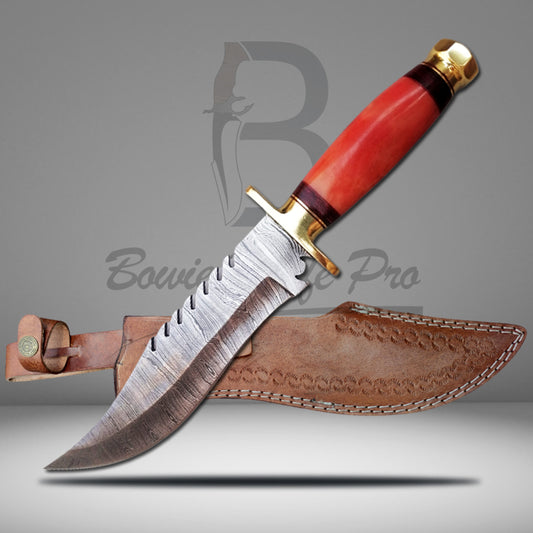
Damascus Knife Hunting Bowie Knife Pro Bone Handle Brass Guard And Pommel With Knife Sheath VK-206
Regular price From $160.00 USDRegular priceUnit price / per$260.00 USDSale price From $160.00 USDSale -
Viking Hammer God Of War Mjolnir Replica Hammer With Wood Box
Regular price $390.00 USDRegular priceUnit price / per$680.00 USDSale price $390.00 USDSale -
Handmade Stainless Steel Bowie Knife Bull Horn Handle Sharped Edge With Knife Sheath
Regular price $220.00 USDRegular priceUnit price / per$320.00 USDSale price $220.00 USDSale -
Premium Sub-Hilt Hunting Bowie Knife With Pure Leather Sheath
Regular price $220.00 USDRegular priceUnit price / per$320.00 USDSale price $220.00 USDSale -
Custom Handmade Hunting Knife Full Tang High Carbon Steel Blade Wrap Paracord Handle With Knife Sheath VK-225
Regular price $170.00 USDRegular priceUnit price / per$270.00 USDSale price $170.00 USDSale -
Custom Hunting Bowie Knife Sharped Steel Blade Pakka Wood Handle Guard And Pommel In Brass With Knife Sheath VK-224
Regular price $185.00 USDRegular priceUnit price / per$285.00 USDSale price $185.00 USDSale
Pocket Folding Knives
-
Handmade Engraved Pocket Knife Custom Folding Knife VA-01
Regular price $290.00 USDRegular priceUnit price / per$450.00 USDSale price $290.00 USDSale -
Best Pocket Knife Hand Engraved Folding Knife VA-02
Regular price $270.00 USDRegular priceUnit price / per$430.00 USDSale price $270.00 USDSale -
Best Folding Knife Hand Engraved Pocket Knife VA-03
Regular price $290.00 USDRegular priceUnit price / per$450.00 USDSale price $290.00 USDSale -
Engraved Pocket Knife Handmade Folding Knife VA-04
Regular price $290.00 USDRegular priceUnit price / per$450.00 USDSale price $290.00 USDSale -
Best Pocket Knife Custom Handmade Folding Knife VA-05
Regular price $280.00 USDRegular priceUnit price / per$450.00 USDSale price $280.00 USDSale -
Karambit Pocket Knife Hand Engraved Folding Knife VA-06
Regular price $290.00 USDRegular priceUnit price / per$480.00 USDSale price $290.00 USDSale -
Damascus Steel Pocket Knife Handmade Folding Knife VA-07
Regular price $160.00 USDRegular priceUnit price / per$260.00 USDSale price $160.00 USDSale -
Damascus Steel Pocket Knife Ram Horn Handle VA-08
Regular price $160.00 USDRegular priceUnit price / per$260.00 USDSale price $160.00 USDSale
WHAT IS THE MANUFACTURING PROCESS OF THE VIKING AXES?
After looking at the 2 most common types of Viking Axes, we will now discuss the production process of Viking Axes.
The heads of the Axes usually have a spiral-shaped cross. The opposite part of the head near the edge however was usually the shape of a diamond, providing great strength for the weight of the metal. Some of the Axe heads were very thin, contrastingly fine. Although these Axes were extremely thin and deceptive to be used for wood splitting, they were prominent in cranium splitting.
If you look at the heads of the original Viking Axe from the restoration of the Axe, especially the wide and wedge-shaped ones, they immediately indicate the fact that they were made as a single piece. The haft hole (also called the eye) was then emptied.
With thin blades, the blade is folded to keep an eye. A piece of metal is then burned on the metal head to the edge. The wrap was balanced in some cases, and in others it was asymmetrical, the weld placed slightly forward in the eye.
Some original Axe heads have visible weld hammer (back) of the eye. It is believed that the heads are first formed by the head and then separated at the back by its strength. This will create a Y-shaped cross section.
Both Y-arms were tied together to form an eye, after which they were formed and stitched together. These eyes are usually shaped like a shield or a D, and are not round, and the hammer (back) was stronger and thicker than the sides.
Interestingly, there does not appear to be any double-edged Axes of the Axe head, nor is it mentioned in any of the Viking stories.
It was also noted that the beams were rarely used on Axes during the Vikings to provide security from automatic cuts, although there is some archeological evidence that they were used occasionally.
The Axe head can be fastened to the hat in many ways. One way is to reduce the eye of the Axe and the shaft. This will happen to the head that fits snugly on the shaft and will prevent it from slipping away from the end. However the head is tied to the end, the Axe must be able to withstand both push and pull.
Although there is almost no evidence of Axes used in the Viking era, it is believed that they were probably made using riving.
A SMALL GUIDE ON HOW TO USE VIKING AXES
Axes with small holes are very useful because they can be easily hidden. A small Axe can be hidden under a jacket and used for a sudden attack and is always locked behind a shield.
Some people think that an Axe is more difficult to control than a powerful weapon. With a well-formed Axe it is not so. The Axe is also more valuable than any other sharp weapon because the curved edge incorporates all the force of the blows into smaller pieces. This gives the Axe enough power to pierce the post or the helmet.
The Axe can be used for a variety of movements due to the shape of the curved head. The Axe head can be adjusted to attract the enemy's ankle, thus lowering it and lowering it. It can also be tied to another part of the body like the neck, forcing a person to move where he does not want to go.
The Axe can also be used to sharpen a defensive armor, pull it out to suppress attacks, or eliminate enemy weapons.
The sharp tips at the end of the Viking Axe were rough and could be used as part of the attack. Tips can also be used for aggressive attacks. The tips cause horrible injuries when used to stab as the Axe horn is much wider than a sword or point of a spear.
Once the Axe was used to strike a heavy Axe, the back of the Axe. This was done to discredit the enemy, or in some cases, used against enemies who were considered too low to strike properly. It would seem impossible for an Axe to grind, but once desperate, men would do anything to succeed, so learning to throw Axes was a lifesaver.
Another unusual movement with Axes is described in Viking sagas. This involves jumping off and hooking the Axe head over the protective wall to pass the obstacle. Another method would be to use an Axe on the left, causing the lashes to penetrate the unprotected enemy.
The heads of the Viking Axes could not be broken, especially when attacked by a stone or a solid object. some parts of the Axe could not be used to protect themselves.
Protips For Easy Maintenance Of YOUR Viking AxeS
An ounce of prevention provides a kilogram of treatment. - Ben Franklin
So you need to listen to him to save your money and time.
CORROSION PREVENTION
Rust is the great enemy of the Axe. When rust forms oxygen it pulls electrons away from the metal, causing them to disperse!
Solution:
Do not put your Axe dirty or wet, dirt and moisture will quickly rust. Use oil to protect your Axe head. Remove rust using vinegar and fine metal wool.
Tips For Cleaning
- After using your Axe, you need to clean and maintain the Axe to prevent problems. First, clean the scalp of any sap or tannins, using iron and acetone on the scalp. Clean the handle of dirt and milk. If it is not very dirty, you can use extra iron wool and turpentine.
- If the handle is really dirty or out of the air, move the handle with sand until smooth. After that, grease the handle with boiled linseed oil (BLO).
- Now it is time to anoint the head of the Axe. The oil not only helps to protect the metal, but an oil-lined Axe will cut deeper and faster, saving you time and effort when chopping wood. There is a lot of fat out there. You can use a simple oil like Rem Oil on the scalp, but sometimes you will just apply a BLO on the scalp and hold it together.
- Once the Axe has been washed, dried, and sealed, the Axe is ready to be stored. If you have not followed these steps and your Axe is slightly rusty, you can use white vinegar and metal wool to clean rust.
- If the whole head of the Axe is rusty, it may need to be soaked in white vinegar. In that case you will want to remove the handle before immersion in water, or the risk of damaging the handle
- A dull or broken Axe is useless and dangerous. Using a blunt Axe requires a lot of energy because instead of cutting, you press on the wood. Blunt, damaged Axes tend to look or bounce, making the Axe difficult to control.
- If your Axe handle is twisted, replacing it may be the best or the only option. Depending on the difficulty, some people may be able to repair a twisted Axe by squeezing it or by squeezing the handle and bending it again and again using tools and tools. This may apply to some twisted handles, but it is a time-consuming process with varying results.
- Store the Axes in a dry place, but not too dry or too hot for the handle. Whenever possible keep Axes inside a climate control building.
Blog Posts
-
Viking Swords
Viking or Carolingian sword is a type of sword that was prevalent in Western and Northern Europe during the Middle Ages. The Viking sword was invented in the eighth century...
Viking Swords
Viking or Carolingian sword is a type of sword that was prevalent in Western and Northern Europe during the Middle Ages. The Viking sword was invented in the eighth century...
-
The Revolutionary Facts About Viking Axes
Viking Axe is a handy tool with a variety of uses both on the battlefield and at home. At that time, swords were a luxury and only rich men could...
The Revolutionary Facts About Viking Axes
Viking Axe is a handy tool with a variety of uses both on the battlefield and at home. At that time, swords were a luxury and only rich men could...
-
Top 8 Best Viking And Throwing Axes in 2022
Viking axes - both historically reliable and fun and practical, but also historically inaccurate designs - are widely available online. The popularity of the infamous Vikings drama with the main...
Top 8 Best Viking And Throwing Axes in 2022
Viking axes - both historically reliable and fun and practical, but also historically inaccurate designs - are widely available online. The popularity of the infamous Vikings drama with the main...
